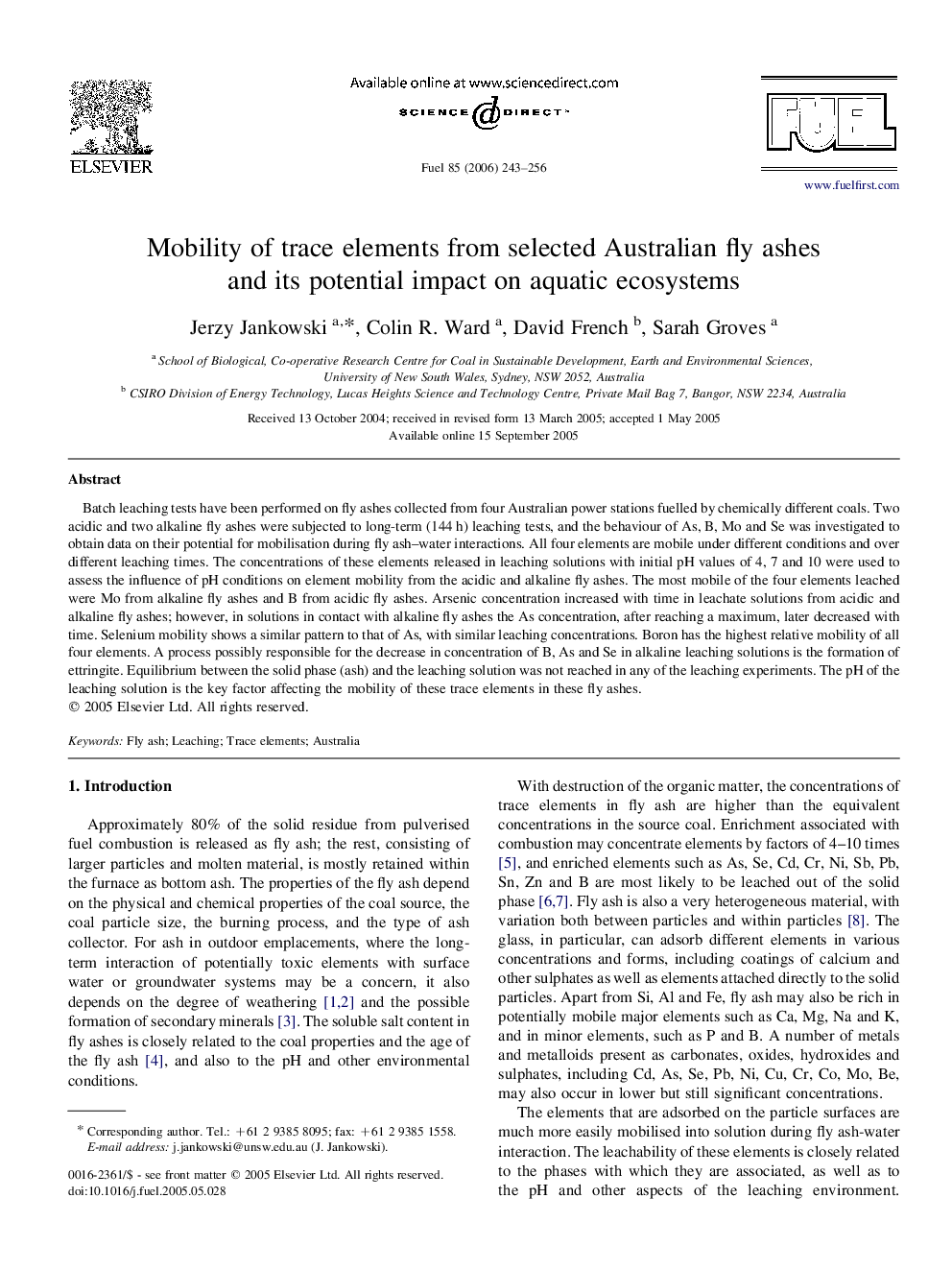| Article ID | Journal | Published Year | Pages | File Type |
|---|---|---|---|---|
| 208749 | Fuel | 2006 | 14 Pages |
Batch leaching tests have been performed on fly ashes collected from four Australian power stations fuelled by chemically different coals. Two acidic and two alkaline fly ashes were subjected to long-term (144 h) leaching tests, and the behaviour of As, B, Mo and Se was investigated to obtain data on their potential for mobilisation during fly ash–water interactions. All four elements are mobile under different conditions and over different leaching times. The concentrations of these elements released in leaching solutions with initial pH values of 4, 7 and 10 were used to assess the influence of pH conditions on element mobility from the acidic and alkaline fly ashes. The most mobile of the four elements leached were Mo from alkaline fly ashes and B from acidic fly ashes. Arsenic concentration increased with time in leachate solutions from acidic and alkaline fly ashes; however, in solutions in contact with alkaline fly ashes the As concentration, after reaching a maximum, later decreased with time. Selenium mobility shows a similar pattern to that of As, with similar leaching concentrations. Boron has the highest relative mobility of all four elements. A process possibly responsible for the decrease in concentration of B, As and Se in alkaline leaching solutions is the formation of ettringite. Equilibrium between the solid phase (ash) and the leaching solution was not reached in any of the leaching experiments. The pH of the leaching solution is the key factor affecting the mobility of these trace elements in these fly ashes.
